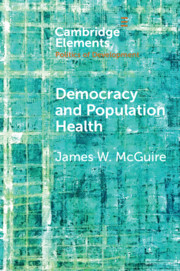Element contents
Democracy and Population Health
Published online by Cambridge University Press: 15 June 2020
Summary
- Type
- Element
- Information
- Online ISBN: 9781108778725Publisher: Cambridge University PressPrint publication: 09 July 2020
References
- 19
- Cited by



